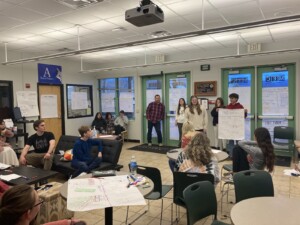An Open Letter to Tom Vander Ark Regarding “Students Deserve Take Home Tech”

In response to Tom’s recent blog, Students Deserve Take Home Tech, published in late June, I wrote this letter about the importance of internet connectivity at home. As much as we’d love for students to be able to take devices home, the bottom line is that it still remains too expensive for many of our students.
Dear Tom,
I enjoyed your blog because it got me thinking–as all of your blogs do–and because I wanted to add to the conversation about why connectivity matters, what barriers exist and how this connects to other issues we write about on GettingSmart.com.
There is a significant social justice issue related to who is connected and how much it costs. As we both know, there are important issues around connectivity and learning that go beyond making sure students have take home technology. I began thinking about this after I read your blog and wanted to share with you what I learned from my own students when teaching at a high school for the last eight years.
The barriers to connectivity at home
When teaching in a school where approximately 70% of the students were enrolled in the free and reduced lunch program, we noticed some significant barriers to connectivity:
1. Students did not have devices, or their devices were broken, old and out-of-date. Many students came to teachers for help when their laptops died or their phones were cracked because they simply did not have the money to replace them. Or, they had devices at home (a computer, a laptop) but they were shared between their siblings and/or parents, so their access was limited. This could be mitigated by schools that purchase devices that are allowed for use at home, as you describe in your blog.
2. Students had devices, but no access to internet at home. Policies need to change here. Internet access is too expensive for many to afford.
3. Other circumstances: They shared a room with siblings (or their own children) and did not have a place to do homework or be on a screen at night. They often had an afternoon/evening job and didn’t have time to be online. I had one student who worked at Dairy Queen as a manager most weekday nights from 4p.m. to 11p.m. She was one of the main supporters of her family.
4. They had neither devices or internet at home. (See #1 and #2 combined).
As I was driving to work this week, I heard a story on NPR about the city of Seattle (where I live) and an organization called Upgrade Seattle who would like to turn internet into a public utility by increasing access and making connectivity less expensive. Comcast and CenturyLink are the two main providers of internet connectivity here, and most people have to pay at minimum $70 dollars a month in order to have internet access at home. The story focused on the challenges the city of Seattle faced if it had implemented the plan to have internet as a public utility (the City Council voted against the plan).
I worked almost exclusively with seniors for four years as a college and career advisor. When I asked students to ________________ (work on scholarships, complete their college essays, fill out the Common Application, sign up for the SAT, etc.) some students could not complete these tasks at home due to one or more of the barriers listed above. In addition, many students had the types of after school responsibilities that are often overlooked and underappreciated in traditional school settings, such as taking care of their siblings or their parents, or working to pay for the basics other students take for granted: groceries, cell phones and/or gas money to get to and from school.
To even the playing field between those who have the devices, the room in their house, the luxury not to work for the basics, the widespread wifi throughout their house – and the have nots – we should provide 1:1 tech at home as you note in your blog.
As you have discussed at length before, we also need policies in our cities, states and nationally that are more conducive for creating internet access and connectivity so that students are able to access and effectively utilize those devices.
Every kid in America deserves good teachers who can model effective strategies for using technology to learn.
In a perfect world, let’s imagine students have devices for use at home and school and they are connected at home.
What if one of the most significant determinants of effective use of tech might come from a student actually knowing what they want to learn more about?
The simple and yet paradoxically complex idea of actually caring about what you are learning is so powerful and can transform that device into what it really can be at its best: an opportunity to truly learn more about the world. Or it could just be a big fat time suck if you let it.
What we need are schools and teachers that are innovative and focused on deeper learning practices – schools and teachers and leaders that support high degrees of engagement through personalized learning approaches, project-based learning, internships and real world learning opportunities, mentorships with caring adults and an emphasis on/modeling of attributes associated with college and career readiness that include mindsets, noncognitive competencies and learning skills.
All of this combined with 1:1 tech at home would go much farther than isolating the tech without the other approaches.
Let’s have good teaching and leadership programs that model deeper learning practices so we can encourage students to use those devices in ways that actually deepen learning. And that’s not for some kids – that’s for all kids, regardless of where they grow up. And let’s have Smart Cities with policies that promote internet connectivity for all: at home, at school and everywhere in between.
For more on connectivity, see:
- Why Connectivity Matters
- 4 Reasons For The Rise of Chromebook
- To “Dream Big” Was More Than A Chromebook in Every Student’s Hands








0 Comments
Leave a Comment
Your email address will not be published. All fields are required.